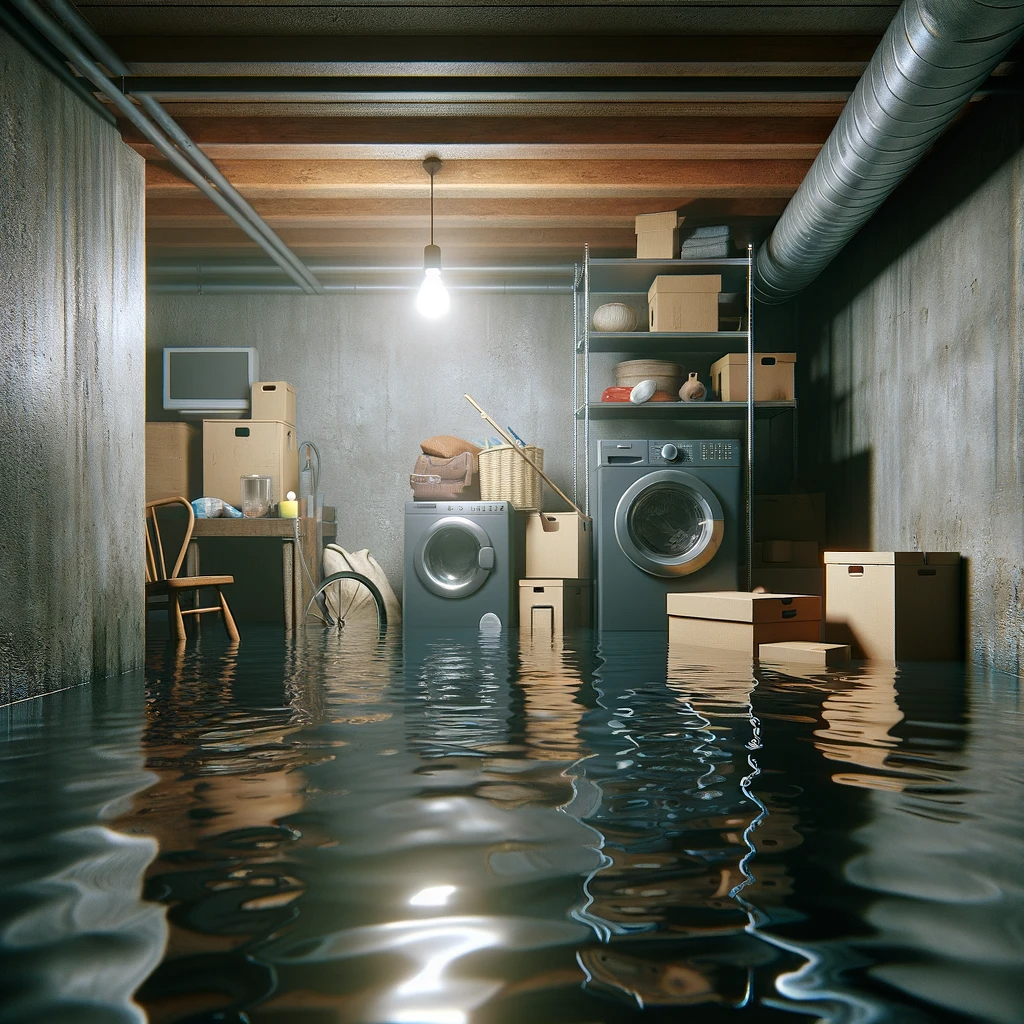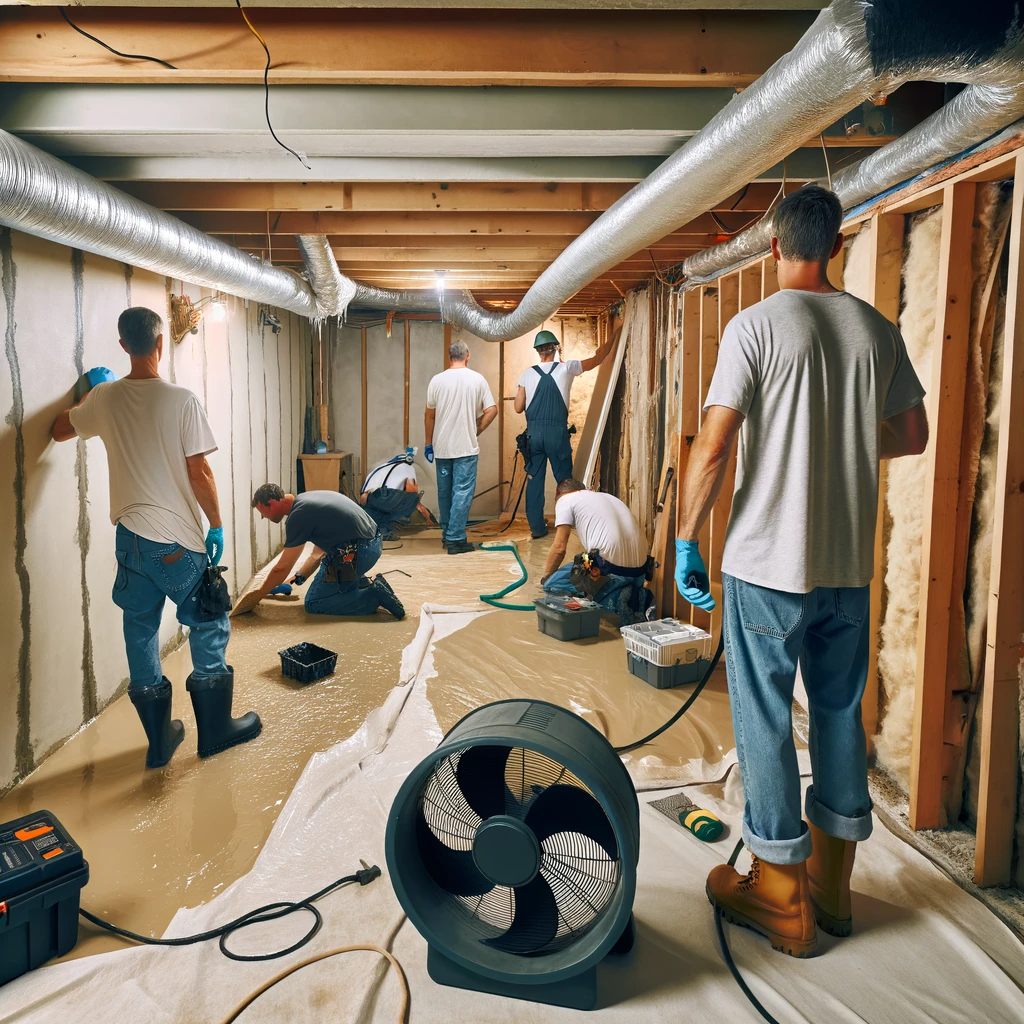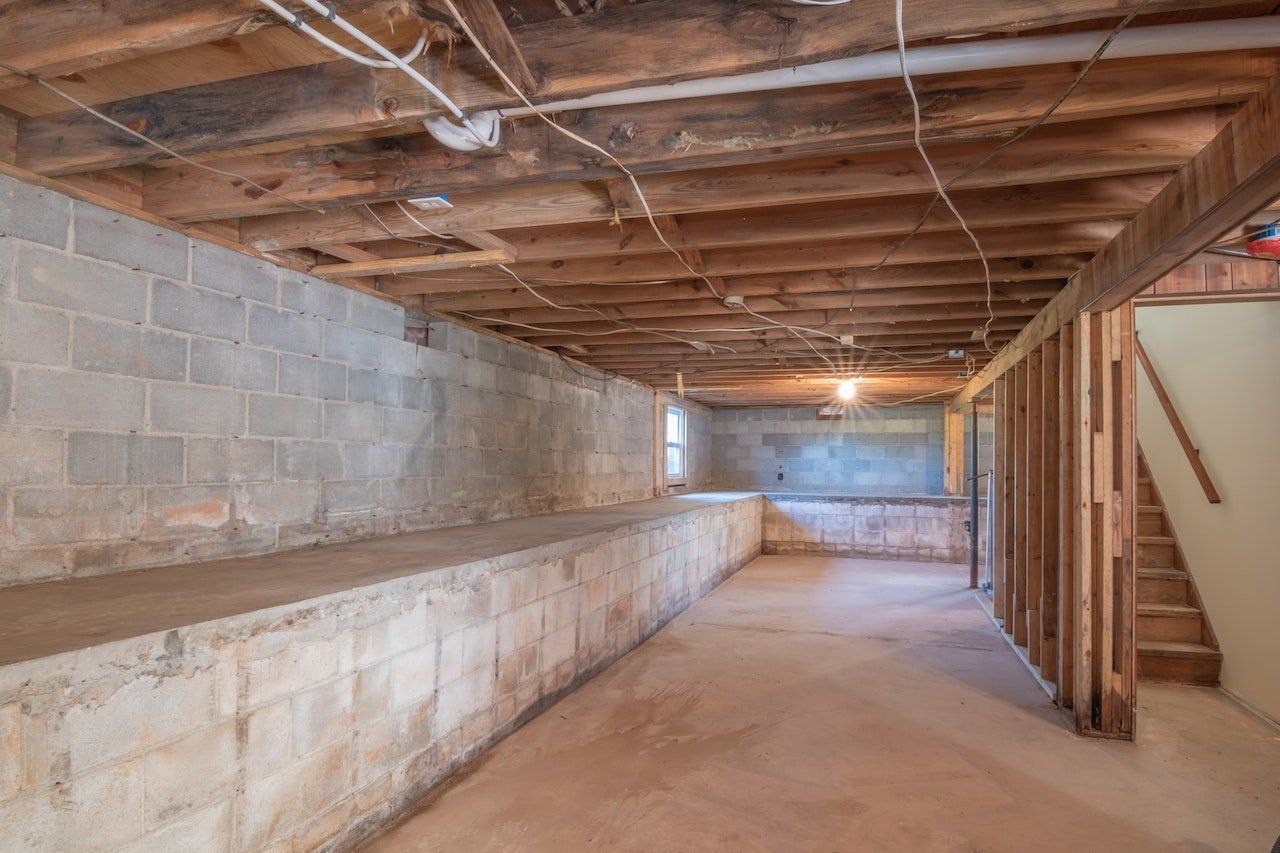Emergency Response: What to Do Immediately When Your Basement Floods
Basement flooding is an all too common occurrence, especially in areas such as Western Massachusetts and Hartford County, Connecticut. When this happens, it presents not only an inconvenience but also a potential threat to the safety and integrity of your home. The urgency associated with a flooded basement cannot be overstated, as delayed or improper handling can lead to devastating consequences such as structural damage and health issues due to mold growth.
7 Steps to Take When Your Basement Floods

- Ensure Safety First
When faced with a flooded basement, the first and foremost priority is ensuring your safety and that of your family. Water and electricity are a dangerous combination, posing severe risks of electric shock or even electrocution. Therefore, it is crucial to shut off the electricity to the affected area immediately. This can be done by switching off the main breaker in your electrical panel. If you're unsure how to do this safely or if the panel is inaccessible due to flooding, it's best to call a professional electrician. - Prevent Additional Water From Entering
Once you have secured your safety, the next critical step is to stop additional water from entering your basement. Identifying the source of the flooding is essential for this. If the flood is due to a burst pipe or a plumbing issue, your immediate action should be to shut off the main water supply to your house. This valve is typically located in the basement or near where the water line enters your home. Turning off the main water supply will halt the flow of water, preventing further inundation.
However, if the flooding is caused by natural factors such as heavy rain or a nearby overflowing river, stopping the water flow can be more challenging. In these cases, using sandbags or other water barriers can be effective. Place these barriers around the perimeter of your home, especially near doors, basement windows, and other entry points where water might seep in. The goal is to redirect the water away from your home as much as possible. If you don't have sandbags, other materials like heavy-duty plastic sheeting supported by boards or bricks can also serve as temporary barriers.
The bottom line is to do everything possible to direct water away from your foundation with whatever means you have at your disposal. - Remove Standing Water
After addressing the immediate safety concerns and stopping additional water from entering, it's essential to start removing the standing water in your basement as quickly as possible. The longer the water sits, the more damage it can cause to your home's structure, electrical systems, and can also lead to mold and mildew growth.
One effective way to remove water is by using a sump pump. Sump pumps are specifically designed to handle large volumes of water and are ideal for extensive flooding situations. If you already have a sump pump installed, make sure it is functioning properly. If not, you may need to install a temporary pump. Place the pump at the lowest part of the flooded area and direct the hose to a location where the water can be safely disposed of, away from the house's foundation
For smaller floods or to remove water left after using a sump pump, a wet-dry vacuum can be very effective. These vacuums are designed to handle water and can be used to remove water from floors, carpets, and hard-to-reach areas. Be sure to frequently empty the vacuum and follow all safety instructions to prevent electrical hazards
In many cases, especially when dealing with significant flooding, it is advisable to seek a professional basement waterproofing company. Professionals have access to industrial-strength equipment that can remove water quickly and efficiently. They also have the expertise to assess the situation and take appropriate measures to ensure that all water, including hidden moisture within walls or under flooring, is thoroughly removed. - Salvage Valuable Items
In the aftermath of a flood, once the immediate safety concerns are addressed and efforts to remove water are underway, your next step should be to salvage valuable items. Time is of the essence in this process, as prolonged exposure to water can irreversibly damage many items.
Take the time to carefully inspect your belongings and remove all wet items from the flooded area. Place these items in a dry, well-ventilated area to prevent further damage or mold growth. It's essential to separate valuable items from those that can be replaced, as this will help prioritize what needs immediate attention. - Dry Out Your Basement
Once the water has been removed and valuable items salvaged, the next crucial step is to thoroughly dry out the area. This is essential to prevent mold growth and structural damage, both of which can pose significant long-term problems for your home.
Tips for drying out your basement:
Use Fans and Dehumidifiers: Set up fans and dehumidifiers around the flooded area to circulate air and reduce moisture. Position them strategically to ensure that air reaches all damp spots, including corners and behind furniture
Ventilate the Space: If weather permits, open windows and doors to allow fresh air to circulate and help dry out the basement. This natural ventilation is an effective way to reduce humidity and moisture levels
Remove Wet Materials: Carpets, insulation, and drywall that have been soaked may need to be removed to prevent mold and mildew. These materials can trap moisture and create an environment conducive to mold growth.
Monitor for Mold Growth: Keep an eye out for signs of mold in the days and weeks following the flood. If you notice any mold, address it immediately to prevent it from spreading - Document the Damage:
For insurance purposes and future reference, it is important to document the damage caused by the flood thoroughly.
Take Photos or Videos: Capture images or videos of the flooded area, including close-ups of the most significant damage. This visual record is crucial for insurance claims and can help in the assessment of losses.
Make Detailed Notes: Along with photos, keep detailed notes about the damage. Include descriptions of affected items, the extent of the water level, and any steps taken to mitigate the damage.
Keep Records of Expenses: Save receipts and records of any expenses related to the flood, such as equipment rental, professional services, or replacement costs. These documents are essential for insurance claims and tax purposes. - Check for Structural Damage
In the wake of a basement flood, it's crucial to conduct a thorough inspection for any signs of structural damage. This step is often overlooked in the immediate response to a flood, but its importance cannot be overstated. Begin by examining the walls and foundation of your basement for any visible cracks or anomalies. These could be telltale signs of stress or weakness in your home's structure, potentially exacerbated by the flood. Even small cracks can expand over time, leading to more significant issues if not addressed promptly.
It's also wise to check for any irregularities in the floors, such as warping or buckling, which might indicate underlying problems. Addressing these issues as soon as they are discovered is key to preventing more severe problems in the future. Remember, when it comes to structural integrity, a proactive approach is always the best course of action.
Cleaning Concrete After A Home Basement Flood

After a flood, cleaning and restoring concrete surfaces in your basement is a critical step to prevent long-term damage and maintain a healthy living environment. Floodwaters can leave behind silt, debris, and potentially harmful contaminants, especially if the flood involved sewage or chemicals.
To begin the cleaning process, first remove any debris or silt from the concrete surface. Once the debris is cleared, use a stiff brush and a mixture of water and a heavy-duty cleaner to scrub the concrete thoroughly. For stubborn stains or areas with significant contamination, you may need to use a stronger disinfectant or a concrete cleaner specifically designed for post-flood cleanup. It's important to ensure the area is well-ventilated during this process, either by opening windows or using fans, to help disperse fumes from cleaning agents.
Once the concrete is cleaned, the next vital step is drying it out completely to prevent mold and mildew growth. This can be a challenging process, as concrete is porous and can absorb a significant amount of water. Use dehumidifiers and fans to accelerate the drying process. In some cases, it may take several days to fully dry out the concrete. Throughout this period, monitor the area for any signs of mold or mildew, and if detected, address it promptly with appropriate mold removal products. Remember, while the surface may appear dry, moisture can linger deep within the concrete, so it's essential to ensure thorough drying. In cases of extensive flooding or if you're uncertain about handling the cleanup effectively, consider consulting with a local basement waterproofing company for post-flood restoration.
How to Prevent Future Flooding

Taking proactive steps to prevent future flooding is crucial, especially if you live in an area prone to heavy rainfall or have experienced basement flooding in the past. One of the most effective ways to start is by making landscaping adjustments. Proper grading around your home ensures that water flows away from your foundation, rather than pooling around it.
Another options is installing functional gutters and downspouts that direct rainwater away from your home can significantly reduce the risk of basement flooding. Ensure these systems are regularly cleaned and maintained to prevent blockages that could lead to water overflow.
If you experience consistent basement water building, you may want to have a sump pump installed. A sump pump is designed to automatically pump out water that accumulates in a sump pit, typically installed at the lowest point in your basement. Regular maintenance of your sump pump, including checking its operation and clearing any debris, is essential to ensure it functions effectively when you need it most. In areas with frequent power outages during storms, consider installing a battery backup for your sump pump to ensure it continues operating when you lose electricity.
Need Expert Basement Waterproofing Solutions?
For a more comprehensive approach, explore professional waterproofing solutions offered by experts like Advanced Basement Waterproofing. These can include sealing cracks in the foundation, installing interior and exterior drainage systems, and applying waterproof coatings to basement walls. These measures not only protect your basement from external water sources but also guard against moisture buildup from within, a common issue in basements.
Advanced Basement Waterproofing is located in Enfield, CT and services all of Western Massachusetts and Hartford County, CT. Whether you have basement flooding in Suffield, CT or basement flooding in Springfield, MA, Advanced Basement Waterproofing can help! Contact us today to schedule a quote!


